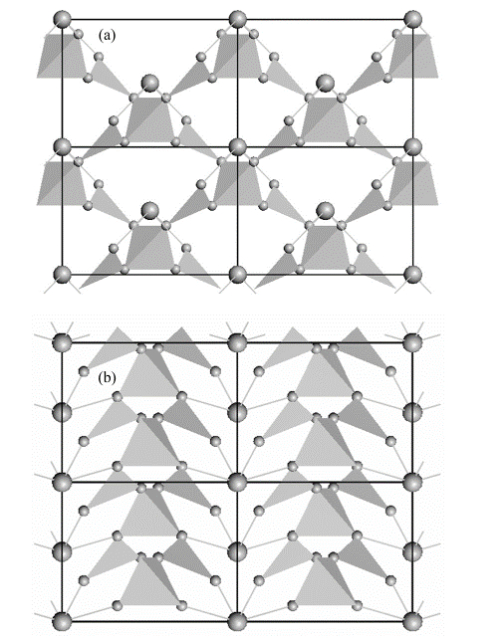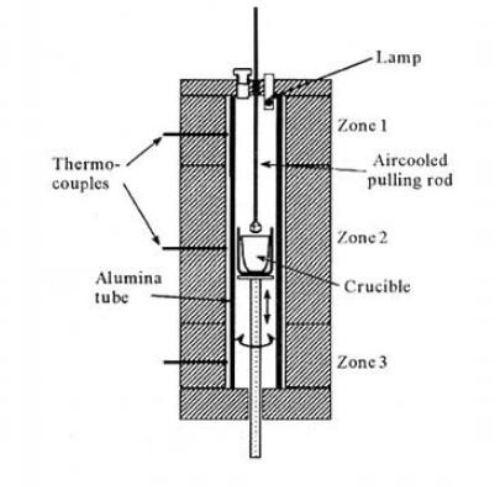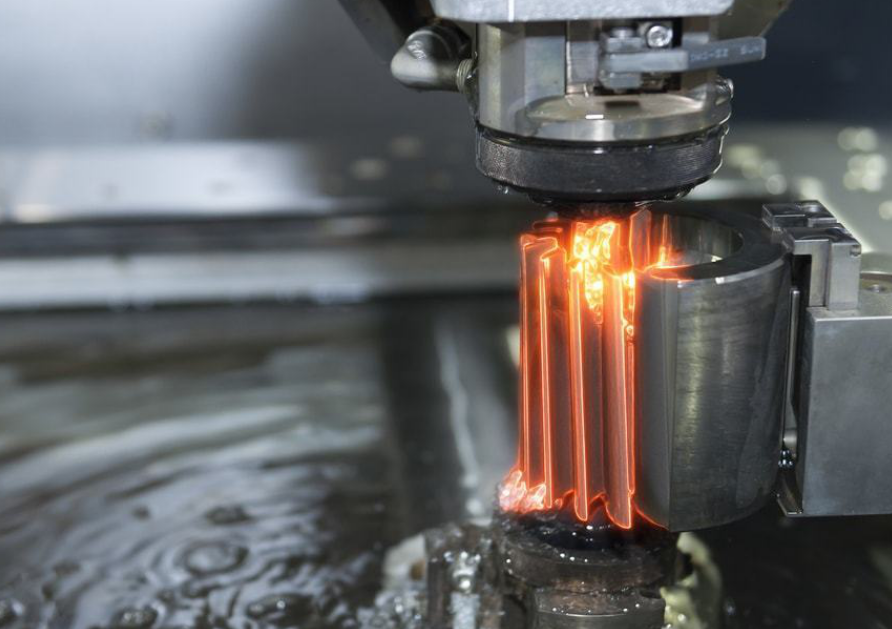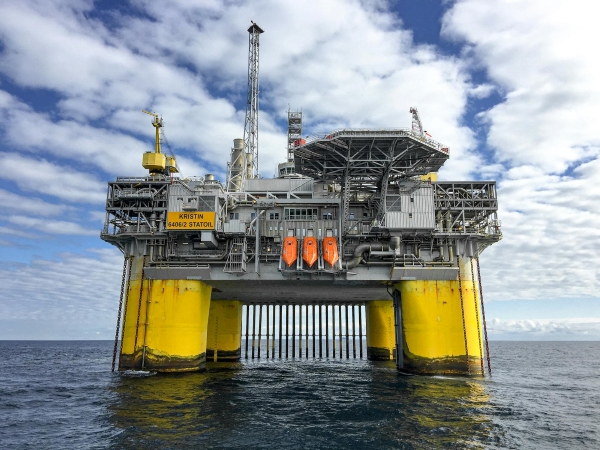From Structure to Application: Is BIBO or BBO the Better Crystal?
1 Abstract
Beta-Barium Borate (BBO), and Bismuth Triborate (BIBO) crystals are frequency-doubling crystals. They are characterized by good transparency in the visible and near-infrared ranges and by their nonlinear optical properties, which have led to their widespread use in nonlinear optical applications. Due to the different nonlinear optical coefficients of BBO and BIBO, they are also used in different application scenarios.
BBO has a large nonlinear optical coefficient, in the application scenarios of optical frequency doubling, summing, and differential frequency generation, its large nonlinear optical coefficient can improve the efficiency, and effective conversion, and produce stronger output signals under the same input power, reducing the power requirement of the device used.
BIBO's moderate nonlinear optical coefficient helps mitigate optical losses and prevents performance limitations due to optical saturation effects. In addition, the nonlinear optical coefficient of the BIBO crystal varies relatively little with temperature, which enables it to maintain stable optical performance over a certain range. This makes it widely used in optical modulators, laser frequency doublers, optical measurements, etc.
In this article, SAM will compare BBO and BIBO crystals from four aspects: crystal structure, optical properties, application scenarios, preparation, and cost, to provide you with a reference for your choice.
2 Introduction of BBO and BIBO
Barium borate, also known as BaB2O4 or Ba(BO2)2, is an inorganic compound. It exists in both hydrated and dehydrated forms, presenting as either a white powder or colorless crystals. The crystals exhibit two distinct phases: the high-temperature α phase and the low-temperature β phase. Both phases demonstrate birefringence, making β phase Barium borate (BBO) a widely used nonlinear optical material.
Bismuth triborate (BiB3O6, BIBO) is a newly developed nonlinear optical crystal. It has a large effective nonlinear optical coefficient, a high damage threshold, and is not susceptible to deliquescence. The appearance is generally presented as colorless crystals.

3 Crystal Structure of BBO and BIBO
BBO belongs to the tripartite crystal system, in which the borate ions in the lattice are arranged in a triangular shape and the barium ions occupy the void positions therein. BIBO belongs to the monoclinic crystal system. The chemical and structural properties of the two are compared in Table 1.
Table 1 Chemical and Structural Properties
| ||
Crystal Structure | tripartite crystal system space point group R3c | monoclinic crystal system space point group C2-2 |
Cell Parameters | a=b=12.532 Å c=12.717 Å Z=6 | a=7.116 Å b=4.993 Å c=6.508 Å β=105.62° Z=2 |
Melting Point | ~1095 ℃ | 726 ℃ |
Mohs Hardness | 4 Mohs | 5-5.5 Mohs |
Density | 3.85 g/cm3 | 5.033 g/cm3 |
Coefficient of Thermal Expansion | α11=4×10-6 /K α33= 36×10-6 /K | αa=4.8×10-5 /K αb=4.4×10-6 /K αc=-2.69×10-5 /K |
According to the different optical properties, crystals can be divided into two categories: optical homogeneous (isotropic) and optical heterogeneous (anisotropic). The tripartite crystal system to which BBO belongs and the monoclinic crystal system to which BIBO belongs to the optical heterogeneous system, while the tripartite cell structure is a uniaxial crystal, with the same physical properties in the directions of a and b axes. The monoclinic crystal system is a biaxial crystal with different characteristic constants in all three axis directions. For nonlinear crystals, because of anisotropy, o light (spherical refracted light) and e light (ellipsoidal refracted light) have different refractive indices, with the phenomenon of birefringence. e light refractive index and the refractive index of the o light with the temperature of the different speed of the change, which makes the interaction of the light wave in the medium participate in the propagation of light waves there is the same speed of the possibility of realizing the effective frequency change. Thus, both BBO and BIBO have nonlinear optical properties.
4 Optical Properties of BBO and BIBO
4.1 Nonlinear Optical Properties of BBO and BIBO
The non-central symmetry inherent in the crystal structures of BBO and BIBO precludes them from adhering to classical central symmetry conditions, thus exhibiting nonlinear optical effects. Consequently, the atoms or molecules within these crystals respond non-linearly to the light field, leading to variations in polarization rate corresponding to changes in light field intensity. It is this nonlinear polarization rate that engenders the unique nonlinear optical properties of BBO and BIBO, characterized by large nonlinear optical coefficients and facilitating their distinctive applications.

Note: (a): Projection diagram of the cell in c direction; (b): Projection diagram of the cell in a direction tetrahedra, triangles, big and small atoms denote anionic groups, [BO4]5-, [BO3]3-, atoms, Bi and O, respectively [1]
BBO and BIBO have some differences in optical properties, mainly in their nonlinear optical coefficient and transparency differences. In terms of nonlinear optical coefficient, BBO has a larger nonlinear optical coefficient in a wider optical spectrum, which is suitable for a variety of Nonlinear Optical applications, such as frequency doubling, summing difference generation, etc. BIBO also has good nonlinear optical properties, and its nonlinear optical coefficient is usually a little lower than that of BBO, but it may be even better in a specific wavelength range. In terms of transparency, BBO has good transparency in the visible and near-infrared ranges, whereas BIBO is slightly less transparent than BBO, especially in the visible range.
However, when compared to other nonlinear optical crystals, BIBO crystals exhibit a remarkable tolerance to optical losses and possess a wide transparent spectral range. Furthermore, the nonlinear optical coefficients of BIBO crystals demonstrate minimal variation with temperature, enabling them to maintain stable optical properties within a certain range.
Table 2 Optical and Non-Linear Optical Properties
| |||
Transmission Band | 190-3500 nm | 286-2500nm | |
Absorption Coefficient | <0.1%/cm@1064 nm <1%/cm@532 nm | <0.1%/cm@1064 nm | |
1064/532 nm | Ratio | 2.7 pm/V | 3.0±0.1 pm/V |
Reception Angle | 0.8mrad·cm (θ, TypeⅠ, 1064 SHG) 1.27mrad·cm (θ, TypeⅡ, 1064 SHG) | 2.32 mard•cm | |
Departure Angle | 2.7° (TypeⅠ, 1064 SHG) 3.2° (TypeⅡ, 1064 SHG) | 25.6 mrad | |
Temperature Bandwidth | 55 ℃·cm | 2.17 ℃·cm | |
Sellmeier Equation (λ/µm) | no2 = 2.7359 + 0.01878 / (λ^2 - 0.01822) - 0.01354 λ^2 ne2 = 2.3753 + 0.01224 / (λ2 - 0.01667) - 0.01516 λ2 | n1^2i(λ)=3.6545+0.0511/(λ^2-0.0371)-0.0226λ^2 n2^2i(λ)=3.0740+0.0323/(λ^2-0.0316)-0.01337λ^2 n3^2i(λ)=3.1685+0.0373/(λ^2-0.0346)-0.01750λ^2 | |
4.2 Introduction to Nonlinear Optical Coefficients
The nonlinear optical coefficient is a fundamental physical quantity that characterizes how a nonlinear optical material responds to the intensity of light. In nonlinear optics, the material's response to light is not solely proportional to the intensity but also depends on higher powers of the intensity. Nonlinear optical coefficients serve as measures of this nonlinear response strength. Their values are influenced by various factors including material properties, such as crystal symmetry, electric field polarization, and molecular structure. For instance, crystals with non-central symmetry often exhibit larger nonlinear optical coefficients due to their unique molecular arrangements. Additionally, the frequency and intensity of the incident light also play crucial roles in determining the material's response. Higher frequency or intensity light may induce stronger nonlinear effects. Overall, understanding the nonlinear optical coefficients provides insights into how materials interact with light and enables the design of efficient nonlinear optical devices.
4.3 Factors Influencing Nonlinear Optical Coefficients
The magnitude of the nonlinear optical coefficient directly affects the efficiency and performance of a material in nonlinear optical applications. For example, in frequency multipliers, the larger the nonlinear optical coefficient, the more efficiently the material will multiply the frequency of incident light to the desired frequency. Similarly, in an optical modulator, the magnitude of the nonlinear optical coefficient will affect the modulation depth and response speed of the modulator.
5 Application Scenarios for BBO and BIBO
5.1 Advances in Optical Research
BBO has a larger nonlinear optical coefficient compared to BIBO, which gives it an advantage in certain applications. In some nonlinear optical applications, such as frequency doubling, summing, and differential frequency generation, a larger nonlinear optical coefficient can improve the efficiency of the optical device, making it more effective in achieving the desired optical conversion. At the same time, larger nonlinear optical coefficients can produce a stronger output signal at the same input power, thereby reducing the power requirements of the optics. In addition, some specific applications require larger nonlinear optical effects to be realized, so larger nonlinear optical coefficients can extend the range of applications for which the material can be used.
In the field of optical research, Stanton EJ et al [2] achieved Cherenkov phase matching on a bonded interface consisting of SiN and BBO nonlinear crystals. The correlation between emission angle, conversion efficiency and output power is analyzed by a systematic study of waveguide dimensions and pump power. The experimental results confirm the feasibility of generating far-ultraviolet lasers and provide theoretical support for the mass production of compact products, which have great potential for applications in human safety disinfection, non-line-of-sight free-space communication and deep-ultraviolet Raman spectroscopy.
Challenges and Drawbacks
However, larger nonlinear optical coefficients may present some challenges and drawbacks, such as a larger nonlinear optical response may lead to increased optical losses in the material, reducing the efficiency of the device. In some cases, larger nonlinear optical coefficients may lead to optical saturation effects that limit the dynamic range and performance of the device. In addition, some materials may perform poorly in terms of stability and durability due to having a large nonlinear optical response. In such application scenarios, BIBO is a more suitable choice than BBO, whose moderate nonlinear optical coefficients and excellent stability allow it to take on a certain range of applications with higher stability requirements.
6 Preparation Process of BBO and BIBO
6.1 Preparation Process of BBO
A growth method of BBO uses Ba(OH)2·8H2O and H3BO3 with a molar ratio of 2:3 for stirring and mixing, adding a flux to the mixing process for the reaction, drying at 200-250°C after the reaction is completed, and sintering at 500°C-600°C for 4-5 hours to obtain crystals of low-temperature phase BBO. After the reaction is completed, it is dried at 200-250°C and then sintered at 500°C-600°C for 4-5 hours to obtain crystals of low-temperature phase BBO. This process adopts the method of low-temperature solid-state reaction, using barium hydroxide and boric acid as raw materials, without other cumbersome steps, the process is simple; enhanced convection under the crystal, reducing the defect rate.
6.2 Preparation Process of BIBO-TSSG
BIBO is grown by the top seed crystal method (TSSG), where the melt is extremely viscous similar to the solution in which the glass is formed, and the use of TSSG allows the crystals to grow from the highly viscous borate melt. Equivalent stoichiometric amounts of Bi2O3 and B2O3 were used to melt in a platinum crucible at a constant temperature of 900 °C after thorough grinding and homogeneity, and a platinum wire was used for the induced growth of crystals, with spontaneous nucleation in the vicinity of the colder platinum wire to form polycrystals that were used as seed crystals for the growth.
As the density of B2O3 is much smaller than Bi2O3, it gathers at the liquid surface in the melt, and the reaction is not sufficient, so the crystal generated is Bi2B8O15.To generate a single crystal, the seed crystal forced growth is used, and transparent Bi2B8O15 is chosen as the seed crystal to obtain polycrystals of BiB3O6 and a small amount of Bi2B8O15 below the saturation point. And then select the BiB3O6 for multiple growth elimination to obtain single crystals. BiB3O6 crystal polar growth phenomenon is more serious, to generate large size, fewer defects, and high utilization of single crystals, it is necessary to use directional growth.
During the crystal growth process, the rotational speed of the seed crystal is generally 3~5r/min, and the cooling rate is 0.1~1℃/d, with a total cooling of no more than 3~4℃ to prevent the generation of parasitic crystals. The crystals are lifted off the page at the end of crystal growth and reduced to room temperature at a rate of 15~25°C/h. Care should be taken that the cooling rate is not too slow so that the melt rapidly becomes vitreous; and to avoid overflow of crystalline expanding melt wrapping around the crystals.

Conclusion
BBO and BIBO have nonlinear optical properties due to their crystal structure, which can be used in lasers, electro-optical devices, as well as other optical conversion devices. BBO has a larger nonlinear optical coefficient, which can effectively improve the output-to-input power ratio of the device, reduce the input power requirements of the optical device and expand the scope of application of the material; while BIBO has a more moderate nonlinear optical BIBO has a moderate nonlinear optical coefficient and higher stability of variable temperature coefficient, which can effectively avoid the optical loss caused by the material, and at the same time, the dynamic range of the device and the performance of the device is less restricted, and the stability and durability are also higher.
In the preparation process, the top seed crystal method is used for growth, and the process of BBO is simpler than that of BIBO, with slightly lower requirements for the process. The choice should be based on the scenario in which it is to be used, operational efficiency, stability and safety, and overall cost. You can consult SAM's professionals for advice and assistance in the selection process.
Related reading:
Other articles in Optics:
Ytterbium-doped Yttrium Aluminum Garnet
Reference:
[1] Zi-fang J, Jing-lin Y, Patrick S, et al. [Microstructure study on bismuth triborate crystal and its melt at high temperature by Raman spectroscopy]. [J]. Guang pu xue yu guang pu fen xi = Guang pu,2012,32(1).
[2] Stanton EJ, Tønning P, Ulsig EZ, Calmar S, Stanton MA, Thomsen ST, Gravesen KB, Johansen P, Volet N. Continuous-wave second-harmonic generation in the far-UVC pumped by a blue laser diode. Sci Rep. 2024 Feb 8;14(1):3238. doi: 10.1038/s41598-024-53144-7. PMID: 38331948; PMCID: PMC10853522.



